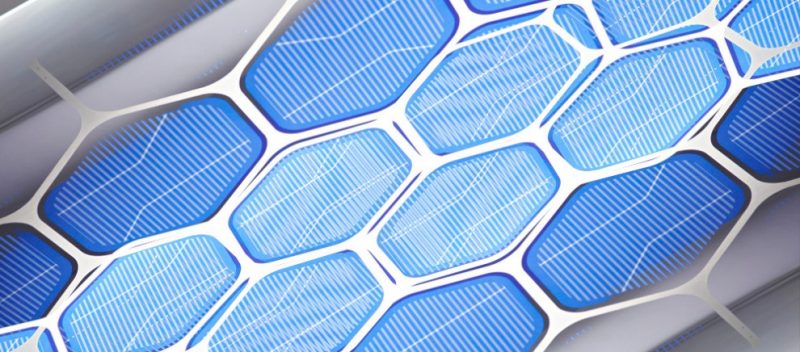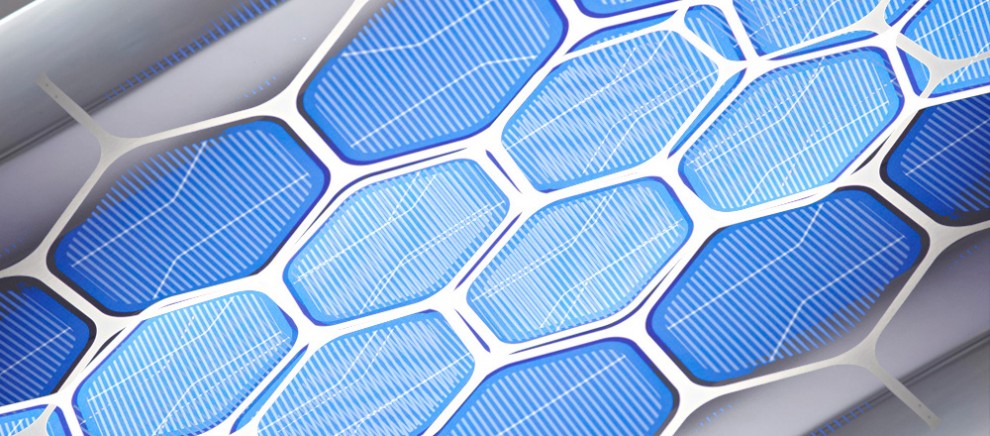Thinnest, Lightest Solar Cells on the Planet Unveiled


The basic forms of solar cells currently on store shelves are weighty and bulky. However, that is about to change in the near future when the laboratory proof-of-concept solar cells made by MIT researchers become a commercial product.
Although, this is understandably far off, say years to come. The innovative photovoltaic cells hold a lot of promise. For starters, they are unbelievably thin, lightweight, and flexible, such that it is possible to place them on top of a soap bubble, without popping the bubble.
That by itself opens a truckload of potential applications. According to the lead research scientist Vladimir Bulović, associate dean for innovation at MIT, the secret sauce is using an entirely new approach.
The typical process used to manufacture the solar cells currently available involves manufacturing the solar cell itself, the substrate that supports the cell and the protective overcoating that shields the setup from the environment separately and then lumping them together later on. By comparison, the novel approach by Bulovic’s team involves making all three components in one process at the same time rather than utilizing separate processes.

(Image Credits : Joel Jean and Anna Osherov)
The experiment done for the initial proof-of-concept utilized an organic material—DBP—as the primary light-absorbing layer and a common flexible polymer—parylene—as both the substrate and the overcoating.
The entire experimental process proceeds at room temperature in a vacuum chamber. Interestingly, no solvents are used. By comparison, conventional solar-cell manufacturing requires high temperatures and harsh chemicals.
The top appeal of the innovation according to the team is not the materials used, but the process itself. This is because the researchers could use different materials with the innovative in-line substrate manufacturing process with remarkable success.
For example, quantum dots or perovskites could replace the organic DBP used in the initial experiment, while a large variety of materials could replace parylene used in the initial experiment.
Going in more detail, the researchers revealed that at the beginning of the process, they had to place a flexible parylene film on a sturdier carrier material—they used glass for the initial experiment. Then when the fabrication process was complete, they used a frame made of flexible film to lift the entire overcoating/solar cell/substrate stack from the carrier (glass).
In simple terms, they place a carrier (glass) in a vacuum system. Deposit everything else (parylene and DBP) on the carrier. Then when the process is completed, they peeled the whole stack (paylene/solar cell/parylene) off the carrier. According to the team, anyone using the process could use another material other than glass as the carrier as well.
To put the thinness and negligible weight of their parylene/solar cell/parylene photovoltaic cell in perspective, the thickness of the entire construction is just one-fiftieth of the thickness of a human hair. By comparison, its thickness is one-thousandth of the thickness of equivalent photovoltaic cells on glass substrates.
Regardless of the ultra-thin and lightweight setup, the innovative solar cell is just as efficient as conventional glass-based cells. To be accurate, the efficiency of a solar cell that is one-fifth the thickness of your hair is not especially efficient. However, the most important factor, and one where the new solar cell excels, is the power-to-weight ratio.
To put it simply, a typical silicon-based solar module has a power-to-weight ratio of 15 watts per kilogram of weight. In contrast, the power-to-weight ratio of the new cells is 6000 watts per kilogram of weight, which is 400 times higher than a typical module.
Therefore, you could actually get a lot of punch from a solar cell that is so light you would not even notice it is there; say on your notebook or shirt. In fact, these cells could be used as simple, very efficient add-ons to existing structures like your fitness tracker.
Bulovic’s team are now working out ways to scale the technology so that it would one day become commercially available and push the frontier of solar power.
Vladimir Bulović, Annie Wang, a research scientist, and Joel Jean, a doctoral student have published details of the new process in the journal Organic Electronics.









